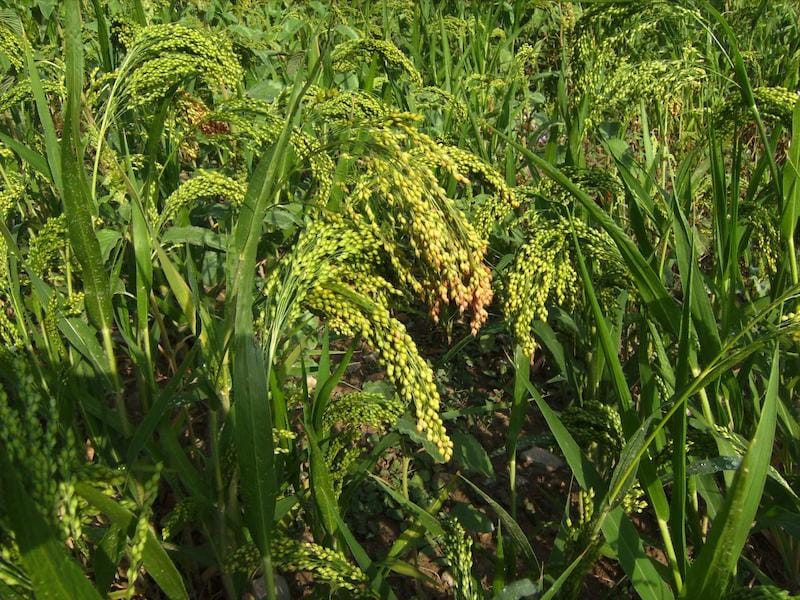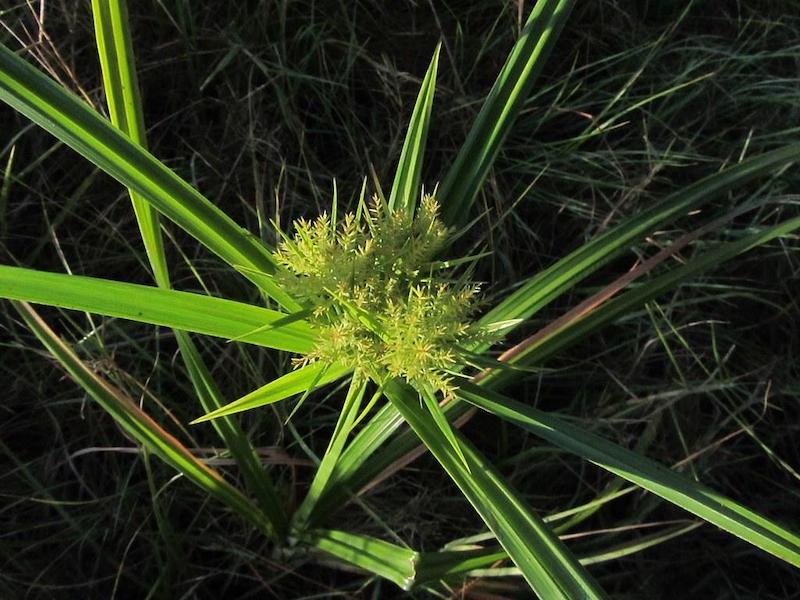If we combed through our grandparent's farming diaries, chances are, we'd definitely have come across some mention of how they planted legumes with a companion crop.
The concept of companion cropping has been around for decades. That is, planting two or more plants together so they grow side-by-side and mutually benefit off each other and our grazing livestock. Similar to how our parents would nudge us to become best pals with a certain classmate in school!
Anyway, these two plants sticking together like buddies can help in pest control, soil health, pollination and even growth.
In today's article, we're going to be talking all about sorghum-sudangrass, a hybrid that's very popular for its ability to add organic matter to worn-out soils.
Sorghum-sudangrass is an upright and coarse grass which is developed by crossing sorghum with a leafy sudangrass. This crossing of crops produces a valuable forage crop that has been known to cause a bumper crop during summer which is June – September. Warm-season crops help bypass periods of low supply during mid to late summer.
They are tall, fast-growers with a love for sunny weather and can easily smother weeds, suppress some species of nematodes and even penetrate compacted subsoil when mowed just once!
If it's allowed to grow till maturity, sorghum-sudangrass can easily reach heights of 8 – 12 ft! The leaves of the plant look almost like corn plant leaves except they are shorter and wider.
However, you should plant sorghum-sudangrass only when the topsoil is at least 20°C or more, to make use of opportunities for quick germination and emergence.

How sorghum-sudangrass can benefit your farm
Biomass
Biomass: As we mentioned earlier, sorghum-sudangrass is almost like the basketball player of forage crops. It grows up to 12 feet tall and has long, slim leaves with stalks that are about 1.27 cm diameter.
This, combined with its aggressive root systems make sure that sorghum-sudangrass can produce significant quantities of biomass, often around 3000 kg Dha. If you're seriously able to optimise its production, you could even yield up to 8000 kg DM/ha of biomass!
A handy optimization tip would be to mow when the stalks reach about 3 -4 feet. This increases the root mass by 5 -8 times if you compare with un-mowed stalks and thus the roots penetrate deeper.
Weed stopper
Weed stopper: When you sow sorghum-sudangrass at a higher rate than what is usually used for forage crops, the plant becomes a super-plant and can easily suppress and smother weeds. The seedlings, shoots, leaves and roots secrete allelopathic compounds that suppress weeds – sometimes even as early as just five days after germination.
Sorghum-sudangrass has proven effective in taking out several annual weeds like velvetleaf, large crabgrass, barnyard grass, smooth pigweed, common ragweed, redroot pigweed, green foxtail and purslane.
For best weed control, choose sorghum-sudangrass hybrids that are high in sorgoleone, the root exudate that's great at suppressing weeds.
Nematode & disease destroyer
Nematode & disease destroyer: You know what's a great way to smoke out those pesky pests, nematodes and wipe out diseases? You guessed it! Just plant sorghum-sudangrass hybrids instead of a host crop.
Soil health
Soil health: Sorghum-sudangrass has a whole range of soil-building benefits. Its in-house root system can help solve compaction issues in the upper layers of the soil.
Its powerhouse roots also anchor the plant strongly into the ground. This helps in securing the soil and shielding it from natural elements like wind or water erosion.
Also, as the roots break down, the large quantity of root biomass helps add to soil health by the addition of organic matter. This organic matter, combined with the nitrogen-fixing benefits of inter-planted legumes helps increase the overall health of the soil and also improves the availability of nutrients for the next set of crops.
Drought tolerance
Drought tolerance: Sorghum-sudangrass is tolerant to conditions of drought which means it can easily adjust in places with low rainfall and irrigation. And apart from already being tolerant to drought, this plant uses up water much more effectively the other warm-season crops.
If you compare it with corn, for instance, sorghum-sudangrass uses one-third lesser water and provides much more biomass.
They withstand drought by going dormant, and sorghum-sudangrass hybrids tolerate pH as high as 9.0 and as low as 5.0.
Quick forage
Quick forage: Sorghum-sudangrass provides quick cover to protect soils from weeds and erosion in cases where legume forages have been winterkilled or even flooded out.
One thing you need to be careful about is livestock poisoning because hybrids and other sorghums could produce acid poisoning. It's riskiest to graze livestock when the plants are up to 24 inches tall, drought-stressed or winterkilled due to frost. The range of toxicity differs between different types of cultivars.
If you want your livestock to graze your cover crop then select sorghum-sudangrass hybrids and related crops that have lower levels of dhurrin. Dhurrin is the compound that causes prussic acid poisoning.
Usually, sorghums contain very little cyanide. But when frozen, during drought stress, wilting or because of mechanical injury, a chemical reaction within the plant produces cyanide. This cyanide gets absorbed into the bloodstream and interferes with normal cell respiration.
How to plant sorghum-sudangrass
Plant it when soils are both warm and moist. Or, you could plant it two weeks after the corn-planting date for your field.
Plant it in cover crop mixtures with buckwheat or with sun hemp, forage soybeans, cowpeas or legumes.
cultivar of a similar height because it tend to compete for light, being an upright crop.

Some management tips:
Since sorghum-sudangrass can grow super tall, of up to 12 feet, it becomes woody as it matures and produces a lot of dry matter. This causes a lot of tough residues that may interfere with early planting.
Now, if you make sure to mow or graze when the stalks become 3-4 feet tall itself, it boosts deeper root growth and tillering, and keeps the regrowth less fibrous and much more vegetative. If you're cutting mid-summer, then leave 6 inches of stubble to ensure good regrowth and suppression of weeds.
And if you're planting it a little later, do it within sweeks of frost so that you don't have to mow/graze, and it still allows for good growth before winterkilling.
Disking when the plants are still vegetative will speed up the process of decomposition.
All about disking
- Make passes with a heavy disk or combination tillage to take care of the dense root masses.
- If you mow with a sickle bar or flail chop before tillage, it will reduce all the fieldwork needed to speed decomposition.
- Using a front-mounted flail chopper will help you successfully 'skip' the skips problem – that is, where tractor tires flatten the plants and hide them away from the reach of a rear-mounted chopper.
- Flail chopping is done after frost, or after killing the cover crop with herbicide helps in the creation of mulch. This helps preserve the life of the soil, it's structure and health in non-compacted fields.
Tips on how to use sorghum-sudangrass for pest management
Weeds
Weeds: Sorghum-sudangrass is useful to help control nutsedge infestations. Let the nutsedge grow till its 4-5 inches. Before the nutlets emerge, use herbicide to kill it and then plant a weed-smothering hybrid. Always remember to cross-check with your farm advisor the best method for your farm.

Nematodes
Nematodes: High-biomass producing crops have a good suppressive effect due to the organic matter contributed. They also produce natural nematicidal compounds that are known to chemically suppress nematodes.
Make sure you cut the tillage well to effectively suppress it. Also, the cover crop has to be tilled while it's still green, and before the frost occurs. For the best results, cut or chopped sudangrass must be immediately incorporated. Sorghum-sudangrass has also been effective in controlling onion maggot, thrips and Botrytis leaf blight.
This article referenced the following sources, Pasture.io’s own repository of wisdom, University of Nebraska–Lincoln (UNL), Sustainable Agriculture Research and Education (SARE), and Virginia Tech.
Until we meet again, Happy Farming!
- The Dedicated Team of Pasture.io, 2020-10-02